A month at the pulse of Africa with the family
Strong winds and clear air - a relief after the heat of the day and the adventurous drive to our first wild camping site on the edge of the Brukkaros Crater. We stand under the brightly shining moon next to our rented car with the two roof tents folded out. We enjoy dinner under the unfolding southern night sky - then the moon gives way to the Milky Way and thousands upon thousands of stars.
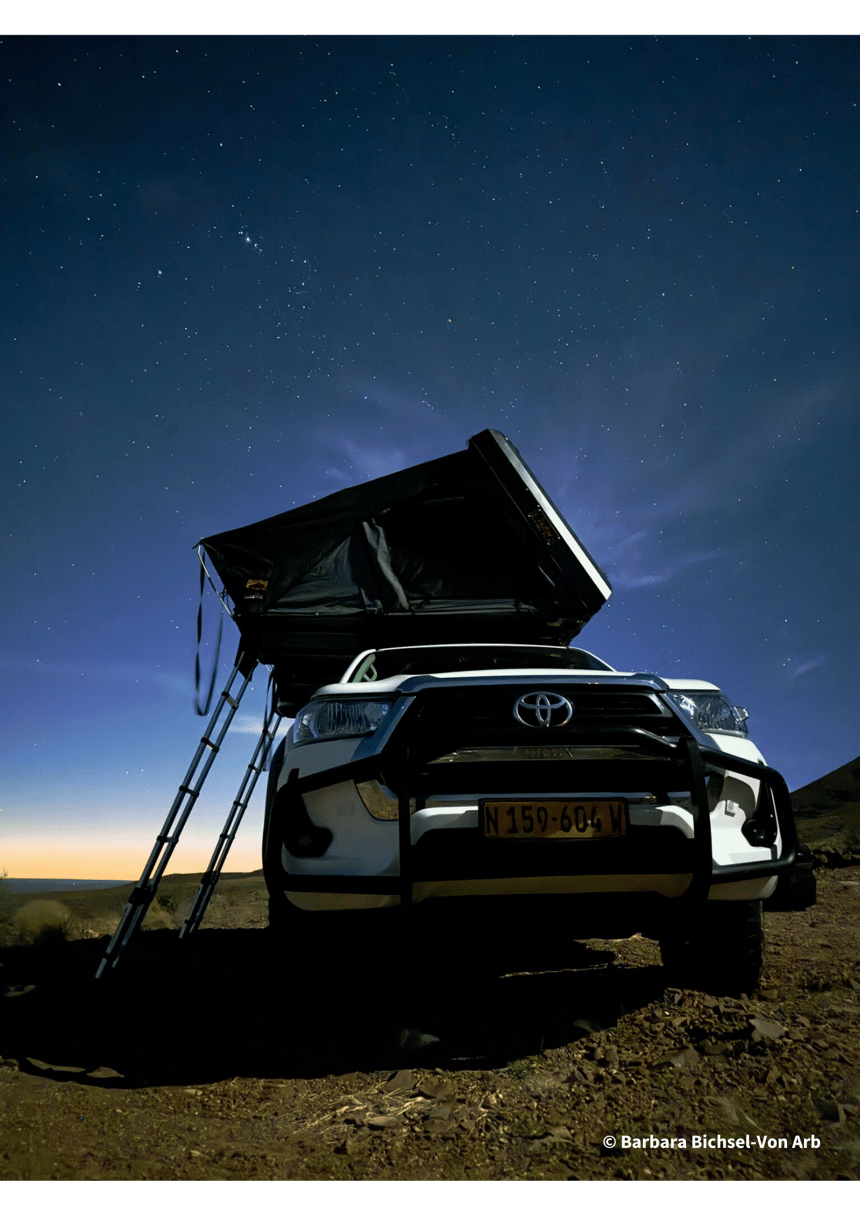
Wild camping in Namibia is possible, as long as it is not on private land.
The Fish River Canyon, the second largest canyon in the world, awaits us soon. We will drive through the Namib Desert, climb dunes, encounter wild horses and lions and see the seal and flamingo colonies on the coast, drive through the Etosha Park and enjoy wonderful and exciting animal encounters. We will stay in pretty and practically furnished campsites and occasionally treat ourselves to a lodge. We will hike through mountains and fight the heat, long for rain and enjoy endless enchanting sunsets with a "sundowner". Jackals, rhinos and scorpions will visit us at night. We will even be roused from our sleep by the grunting of hippos in the Okavango Delta or by the roar of lions in the Kalahari. We will eat delicious food and also cook for ourselves, learn the click language of the San and marvel at 2000-year-old rock paintings. We have all this and much more ahead of us that night at the crater.

Views from the Sunset Viewpoint at Fishriver Canyon.

Experience the sea at Walvis Bay.

The Hornbill - or simply Tokotoko
-1.png?width=250&height=140&name=Random%20Stuff(12)-1.png)
Zebra herd at a waterhole in Etosha National Park
Traveling with children in Namibia
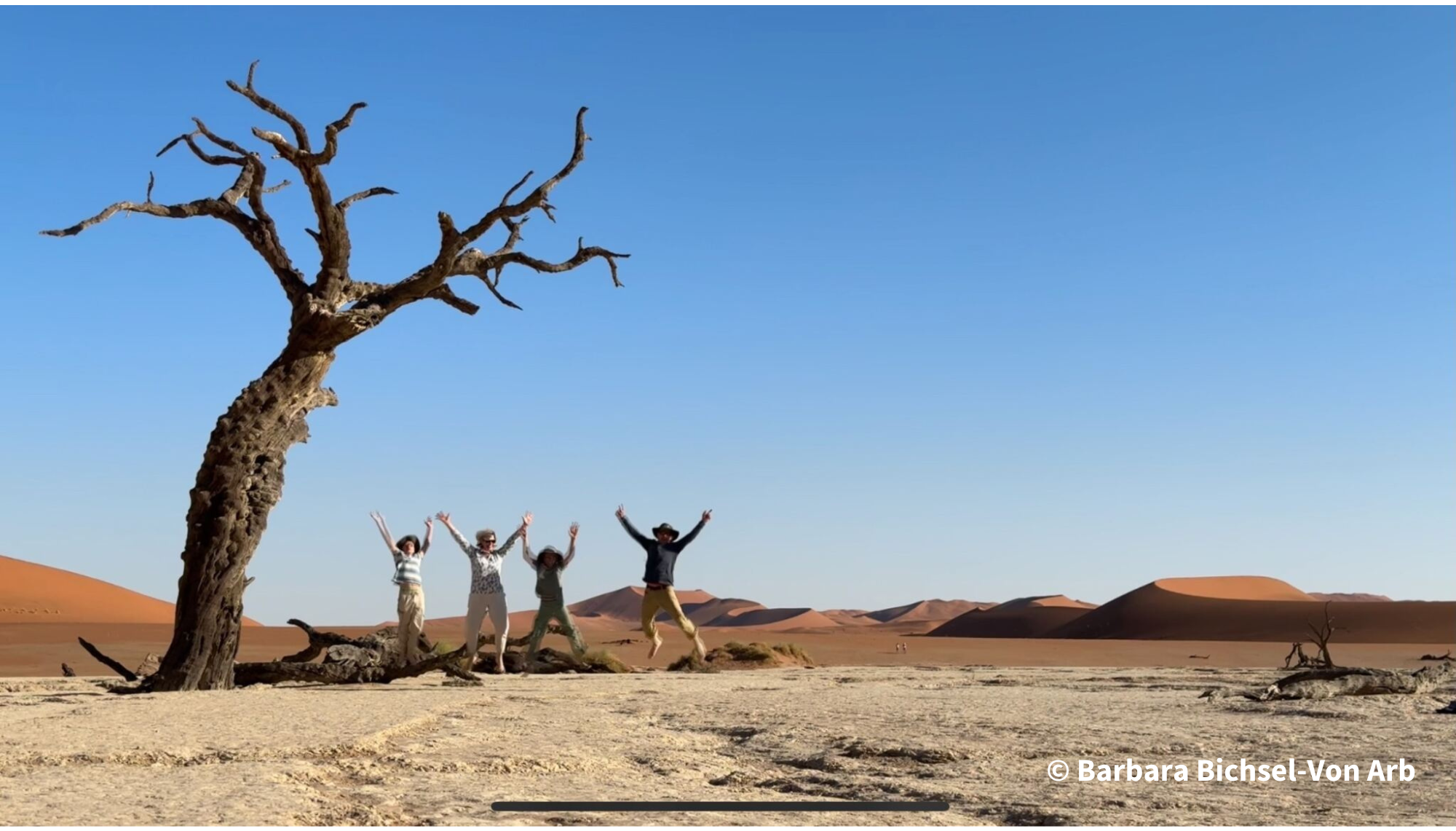
Sossousvlei – Namib desert
Namibia is a country that can be traveled to independently with a little preparation. Even with children. However, we waited until our twins were 12 years old. This was not only because we wanted to be sure that they would be able to endure long car journeys at this age, that they would be enthusiastic about quiet observations of nature, history and the people of the country and that we didn't want to waste valuable space in the car with child seats. There is also the very humbling aspect that children under 12 are still classic prey sizes for African predators. For example, there are lodges with free-roaming wild animals or safari offers that are therefore only permitted for children from the age of 12. In retrospect, the children's knowledge of English (in accordance with the Swiss school system) was also helpful and ensured independent conversations with the local population. For example, the children were able to negotiate prices independently at the timber market in Swakopmund and talked to various traders about the country and life there. The people in Namibia are generally very approachable and extremely friendly. They would never have ripped off the children at this market during the negotiations - on the contrary, they explained to them the art of negotiating and told them that they should first obtain our consent.
Tip: Don't forget your birth certificate upon entering the country!
Population
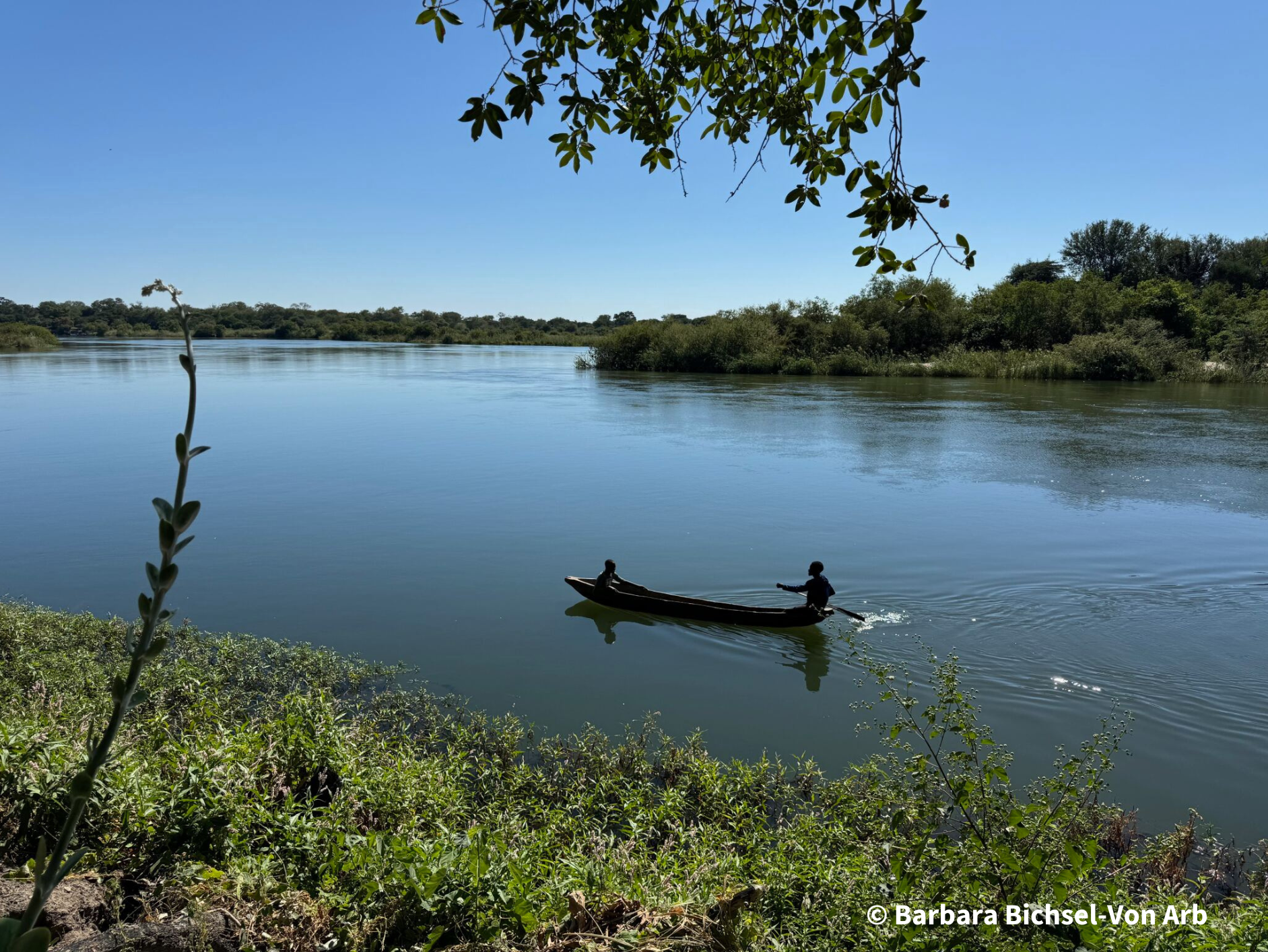
In the north-east of Namibia, at the Kavango River
There are ten major different population groups in Namibia - including white Namibians (it is a former German colony). The German history and influence can still be seen everywhere. There are German street or place names, you can find Spar supermarkets and although they only make up about 5% of Namibia's population, they still own 2/3 of all commercial farms and it is not uncommon to be able to converse with the owners of lodges in German, although the official language of the country is English.
Despite a drastic and discriminatory past, the different population groups in Namibia live together peacefully and tolerantly. We always felt welcome and quickly got into conversation with everyone and experienced an openness and friendliness that really touched us.
Tip: Get into conversation with the locals, for example at market stalls with the vendors, on guided tours with the guides, or at campsites, lodges and in stores with the employees. You will learn a lot about their culture.
Encounters
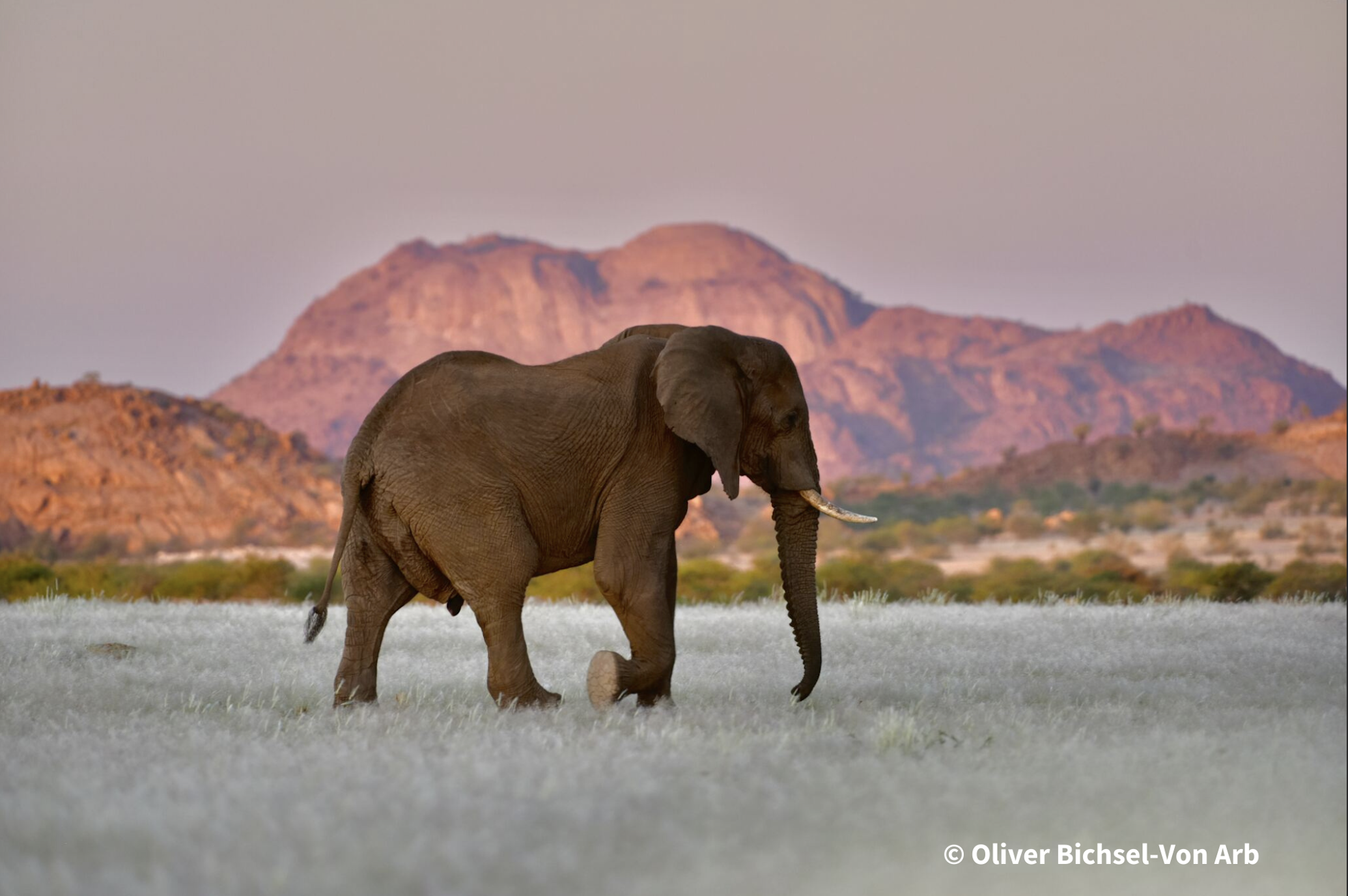
Desert elephants at the Brandberg
There were also exceptional opportunities, such as at the foot of the Brandberg mountain range. At the lodge with its pretty campsite, the local employees offered to sing after their work to earn some extra money. We enjoyed the choir after sunset by the crackling fire and struck up a conversation with a young employee. He grew up in the area and knew the herd of desert elephants that have adapted to the dry conditions here and can dig water holes. He offered to take us out the next day after work to look for the elephants. We ended up walking with him for 5 hours, getting to know each other and watching the herd in the evening light in breathtaking natural surroundings - just us, the elephants and a new friend. This was one of the most touching and impressive moments of the trip. We then drove our guide to his modest tin hut in his village as night had already fallen and were able to get to know his goats and dogs. We heard and learned about the customs and his views and challenges. For example, when we talked about the different ways of keeping livestock in our homelands, he remarked that in his culture you would never slaughter and eat young animals because then you would be destroying the future. How true.
On your own
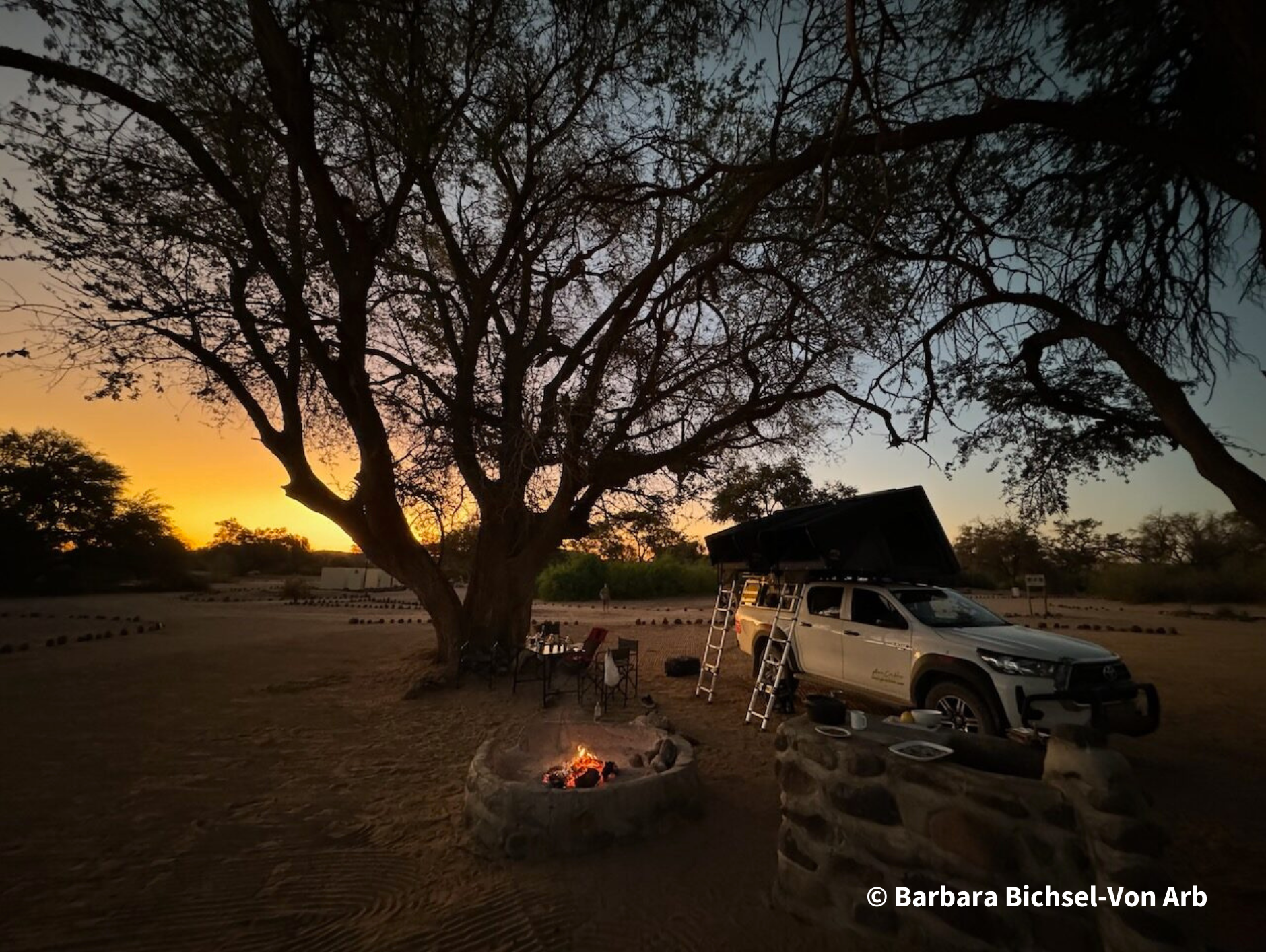
The campsites are almost always spacious, beautifully situated and have good infrastructure.
You would hardly have such experiences if you went on a group tour. Namibia is very suitable for individual travel. The country has very good infrastructure and is quite safe. This allowed us to adapt the pace of our journey to our needs. We were able to adapt to our curiosity and coincidences, and always found a place to spend the night. Of course, we were suitably equipped to do this. We had our own fridge, a spare petrol tank and bike and, of course, our roof tents. A Namibian SIM card was essential so that we could find our way around and communicate flexibly. There are always areas where there is no reception - but overall the coverage is surprisingly good. There are also helpful apps where you can find wild camping spots (Overlander) or paths off the beaten track (Tracks4africa).
Tip: Always carry enough cash with you so that you can pay for a tank of gas, buy something spontaneously at a roadside market stall or give a tip.
Health and nutrition
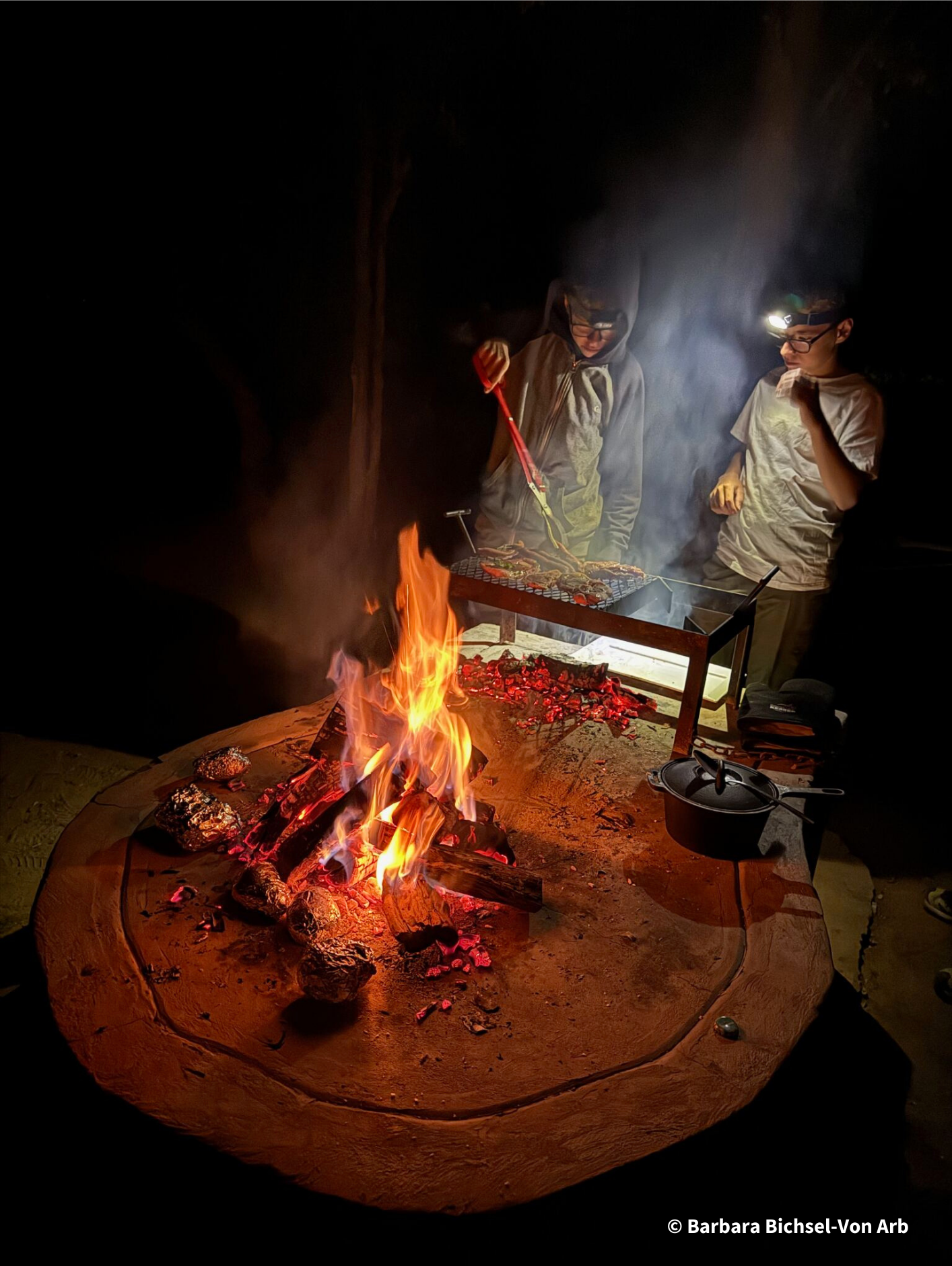
Barbecuing or “Braai” - always and everywhere.
Of course, preparation also includes all the necessary vaccinations, such as against rabies or Hepatitis A and Hepatitis B, and a well-stocked first-aid kit. During a travel consultation, you will find out what you need to add to your vaccination booklet according to your planned route. Malaria prophylaxis is also very important for trips to the malaria area in the north and northeast.
When it comes to food, you should stick to the well-known saying: cook it, boil it, peel it or leave it. A note for people who follow a vegan or vegetarian diet: Namibia is a predominantly meat country. Although you can find vegetables and fruit in larger food stores, the selection is otherwise limited.
Tip: Medical facilities are usually only to be found in larger towns or in the national parks and pharmacies are sometimes very poorly equipped. Therefore, make sure you have your own well-equipped pharmacy and bring antibiotics with you. Always take your own water bottle with you for brushing your teeth.
On the road by car
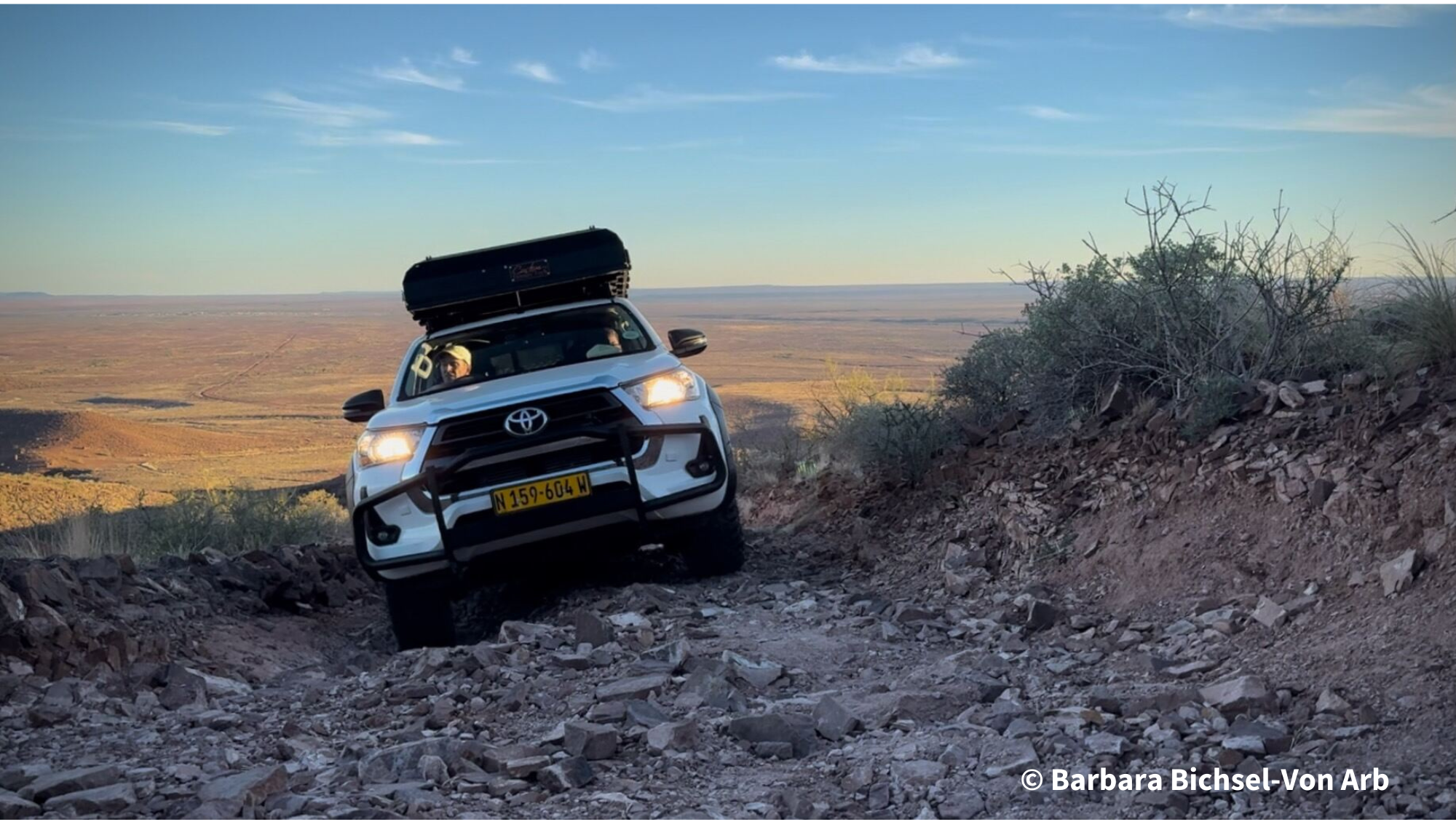
Approach to the Brukkaros crater rim
As only very few roads in Namibia are paved, it is important to familiarize yourself with the road conditions and to adopt an anticipatory and adapted driving style, and factor in sufficient time for the route. Road accidents often end very tragically and are not uncommon. Driving on sometimes deep sand can also be challenging. But it works well if you let a bit of air out of the tires and get tips from experienced drivers beforehand. Of course, you need a working compressor to pump air back into the tires afterwards.
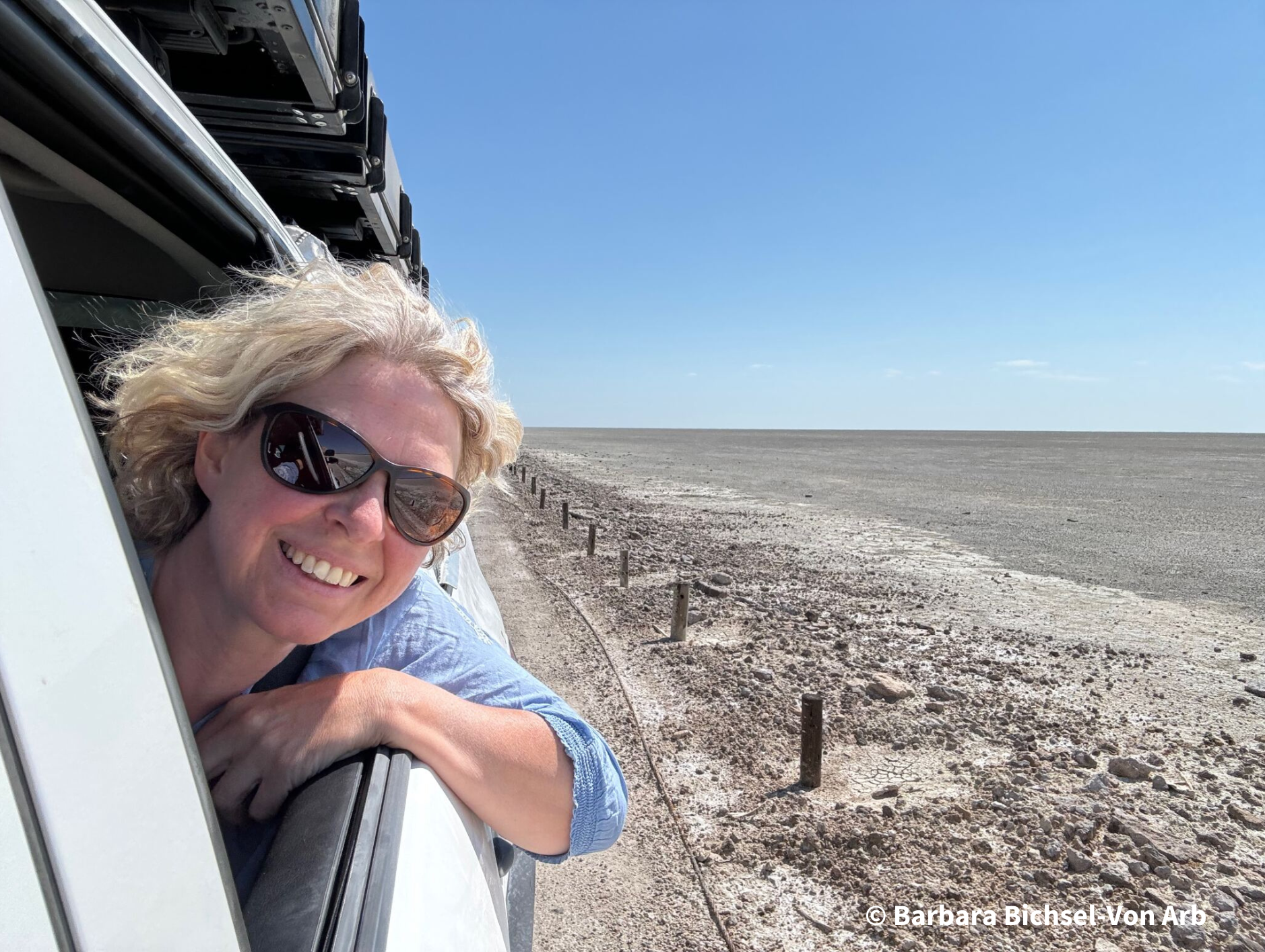
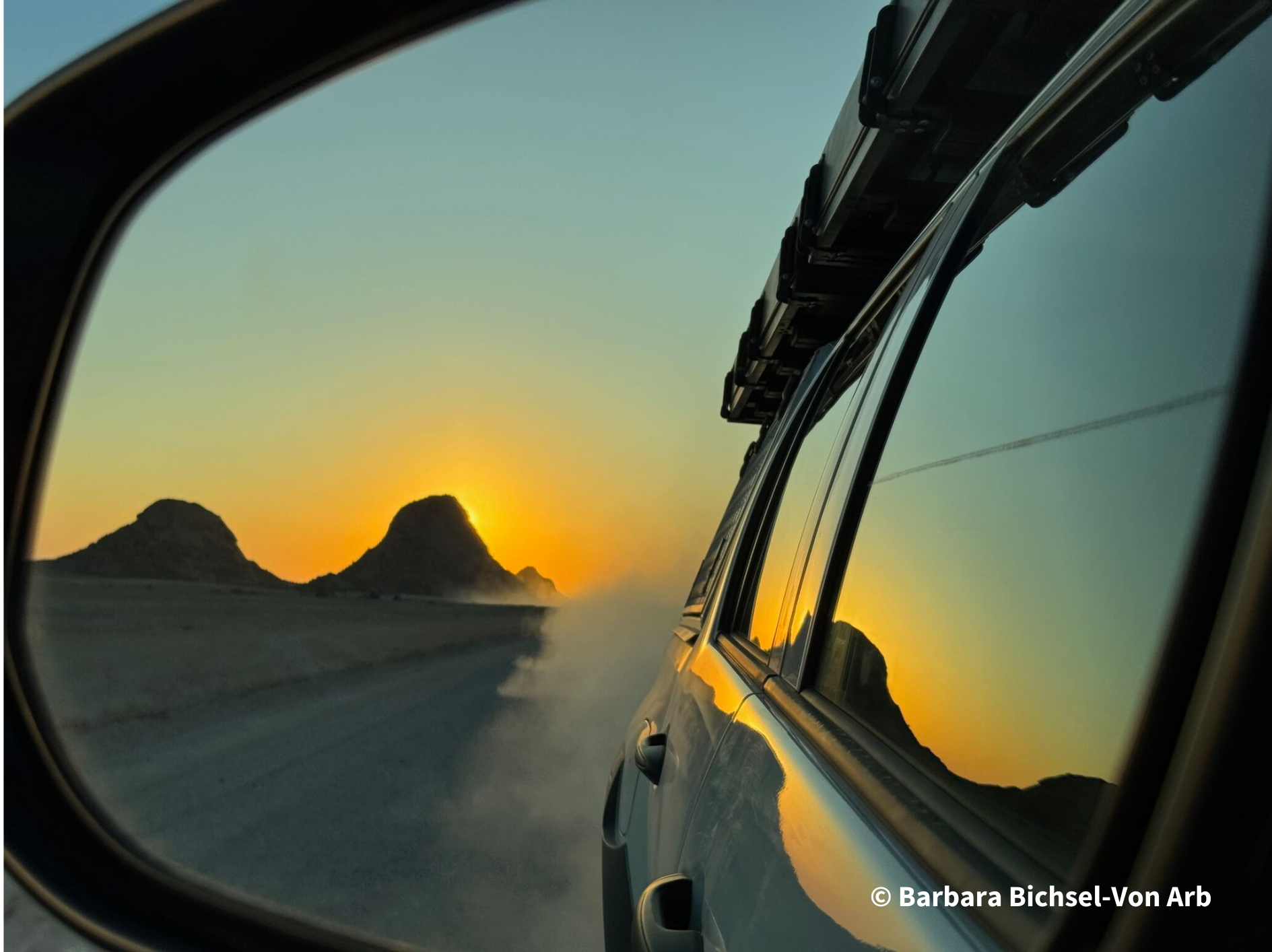
And for those who are wondering whether Namibia can also be discovered by bike. Yes, you can if you really want to. But bear in mind the very hot temperatures during the day and little shade, the very long and lonely gravel and sand roads, which are usually corrugated and result in clouds of dust that last for minutes if a car drives past. Not to mention the sometimes dangerous situations caused by speeding or crossing cars or trucks on the gravel roads. And the wild animals.
Tip: As you often drive on so-called “corrugated iron” gravel or sandy roads and the car and all its contents can shake quite a bit, it is worth bringing foam to cushion lenses, wine bottles, binoculars and so on. After a long journey in deep sand, we had to clean our food crate and the trunk of the car from leaking wine after the wine bottle we were carrying got smashed.
Travel planning
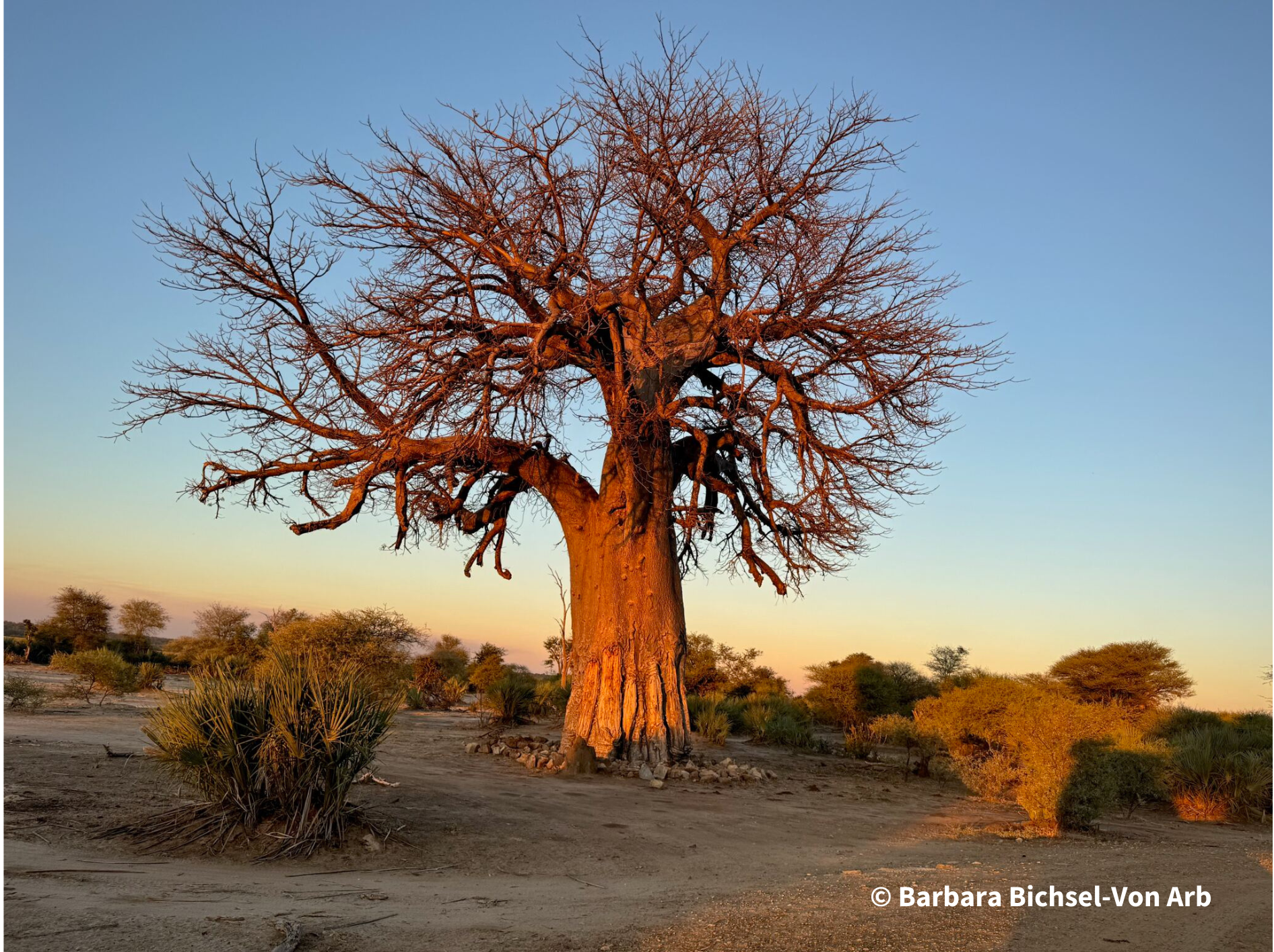
A baobab tree in the Zambezi Strip.
Incidentally, we only pre-booked the first and last night, everything else we booked day by day. This was in the low season travel time in April and May. In the Namibian winter season from June to September, you should book in advance, but in my opinion this is the absolute worst time to travel in Namibia. I recommend the second half of the rainy season from February to April, which only means that rain is possible. Nature blossoms because of the rain and the animals don't all have to gather around the waterholes to avoid dying of thirst. This year's rainy season, for example, was a complete failure in many areas of Namibia - the country is currently battling with an insane drought.
Dealing with visible poverty
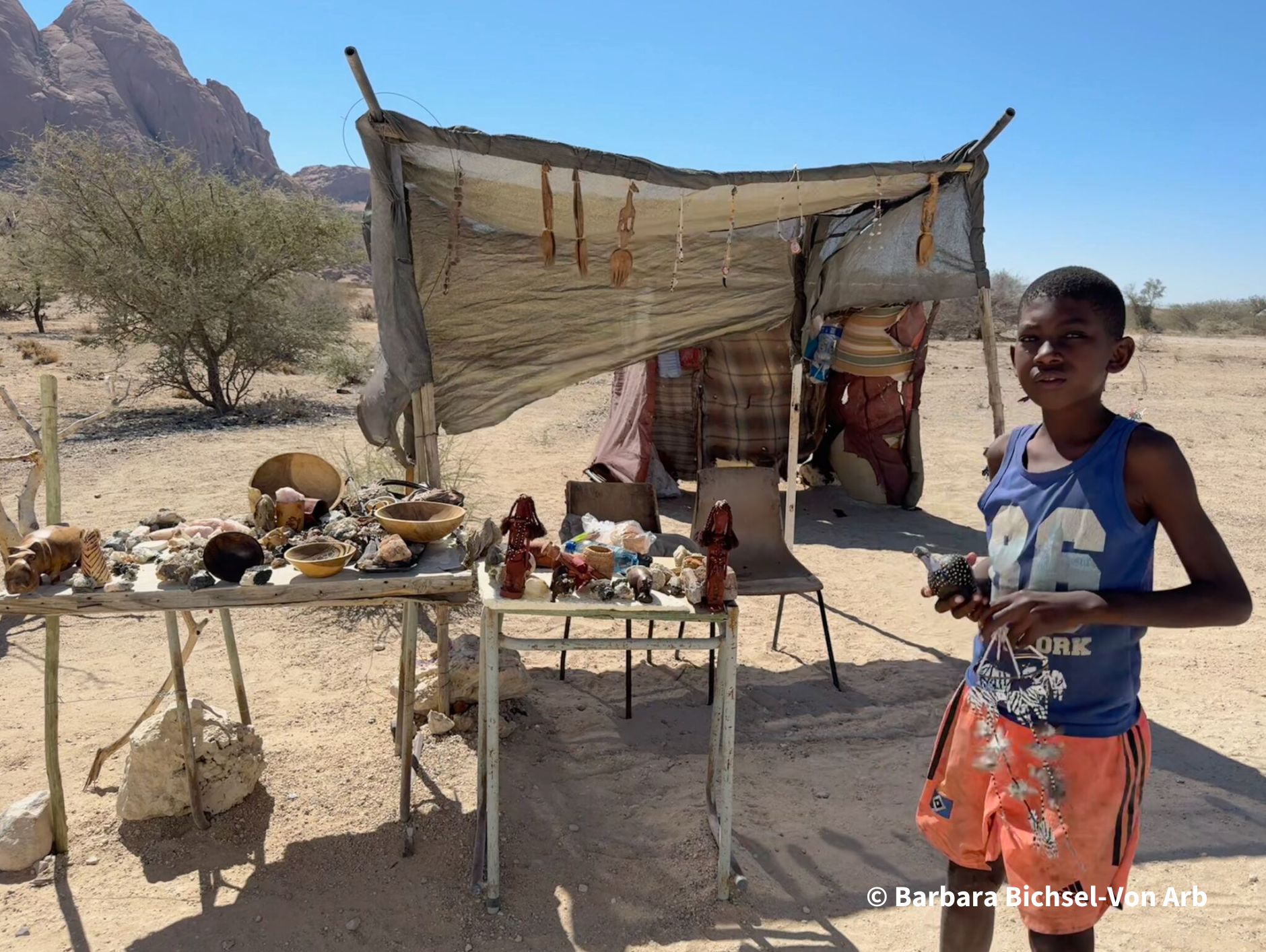
This brings me to the question of whether and what you could bring with you that might make a difference. Especially in the western areas of the country, I recommend carrying extra rice packs and 5-liter water canisters, as well as paracetamol, disinfectant and bandages. Not just for yourself, but also to give to people who need it.
There are often stalls selling lovingly made items along the way. You can stop there and buy something. Not only will you have a wonderful souvenir, you will also be supporting the local people. It is better to buy souvenirs there and not necessarily at the big markets in Windhoek or Swakopmund.
Tip: Buy souvenirs throughout the trip. Sometimes there are very local specialties from the different population groups that you might not find later. The Herero, for example, like to sew cloth bags and dolls, while the Caprivians are fantastic wood artists.
Contrasts
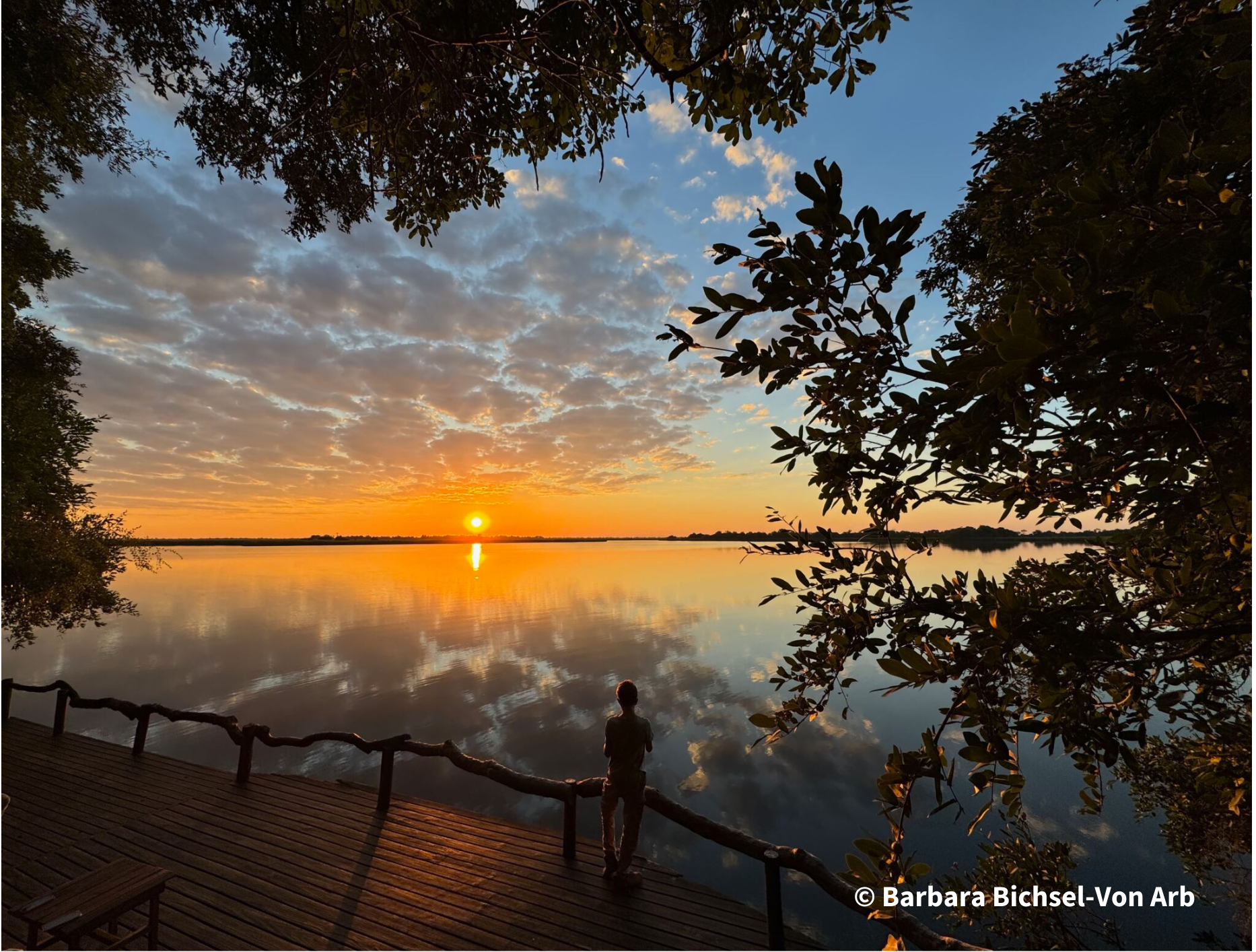
At a freshwater lagoon on the Okavango Delta south of the Namibian border in Botswana, the small clouds are reflected in the red sky. The silence and the view of the water, which is surrounded by thousands of meters of papyrus grasses, make us pause. A moment ago we were exposed to the enormous dryness of the Namibian desert and here we are looking out over the green inland delta of the Kavango River and smelling the water in the cool breeze that caresses our faces. Namibia, a country of extremes and contrasts, with the lowest population density in the world (next to Mongolia) and the richest natural and animal world. A land of the origins of mankind and a country that has written the protection of nature into its constitution. A country that we love.
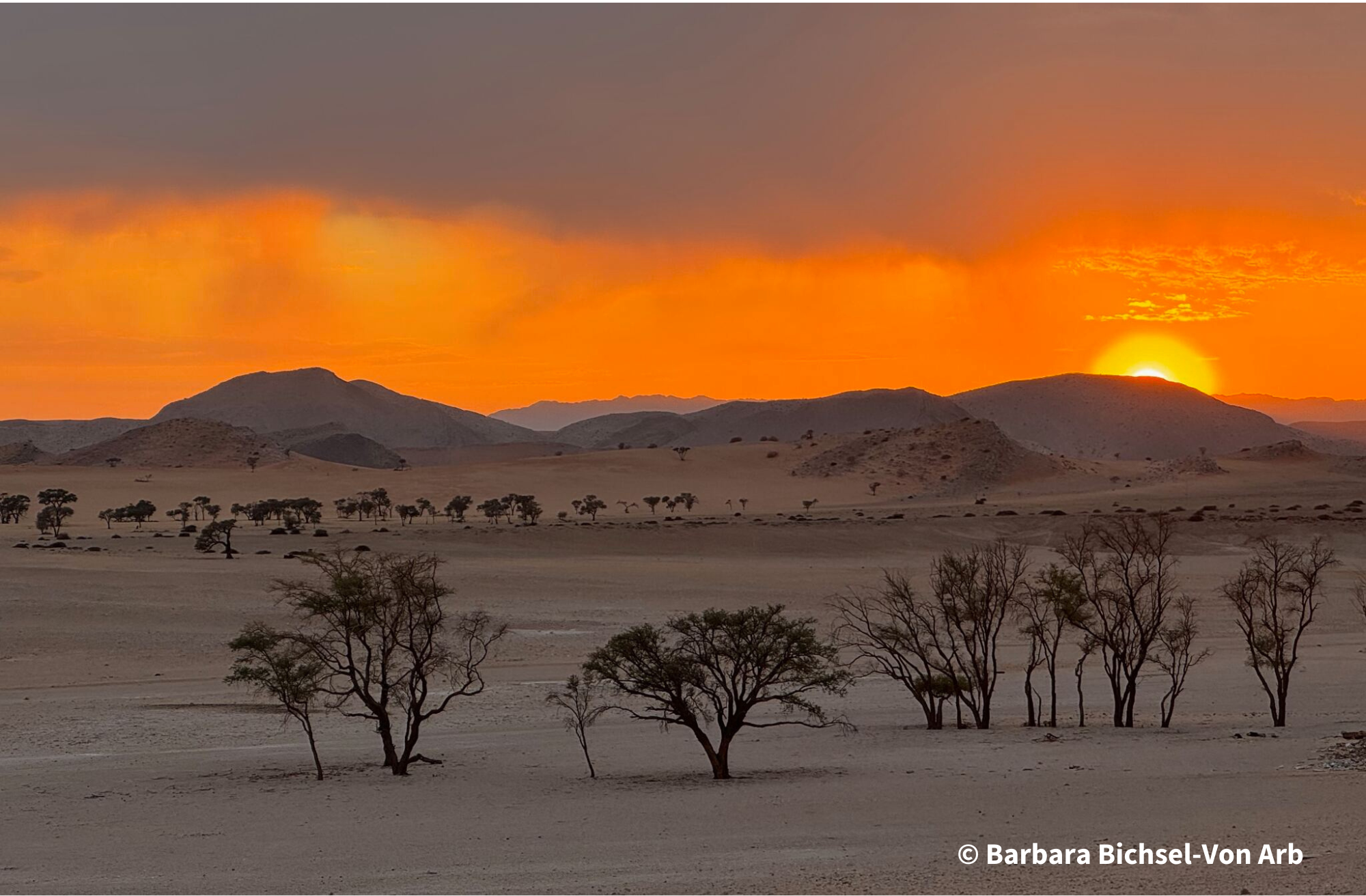
Sunrise in the Tsondab Valley.












-1.png?width=250&height=140&name=Random%20Stuff(12)-1.png)





